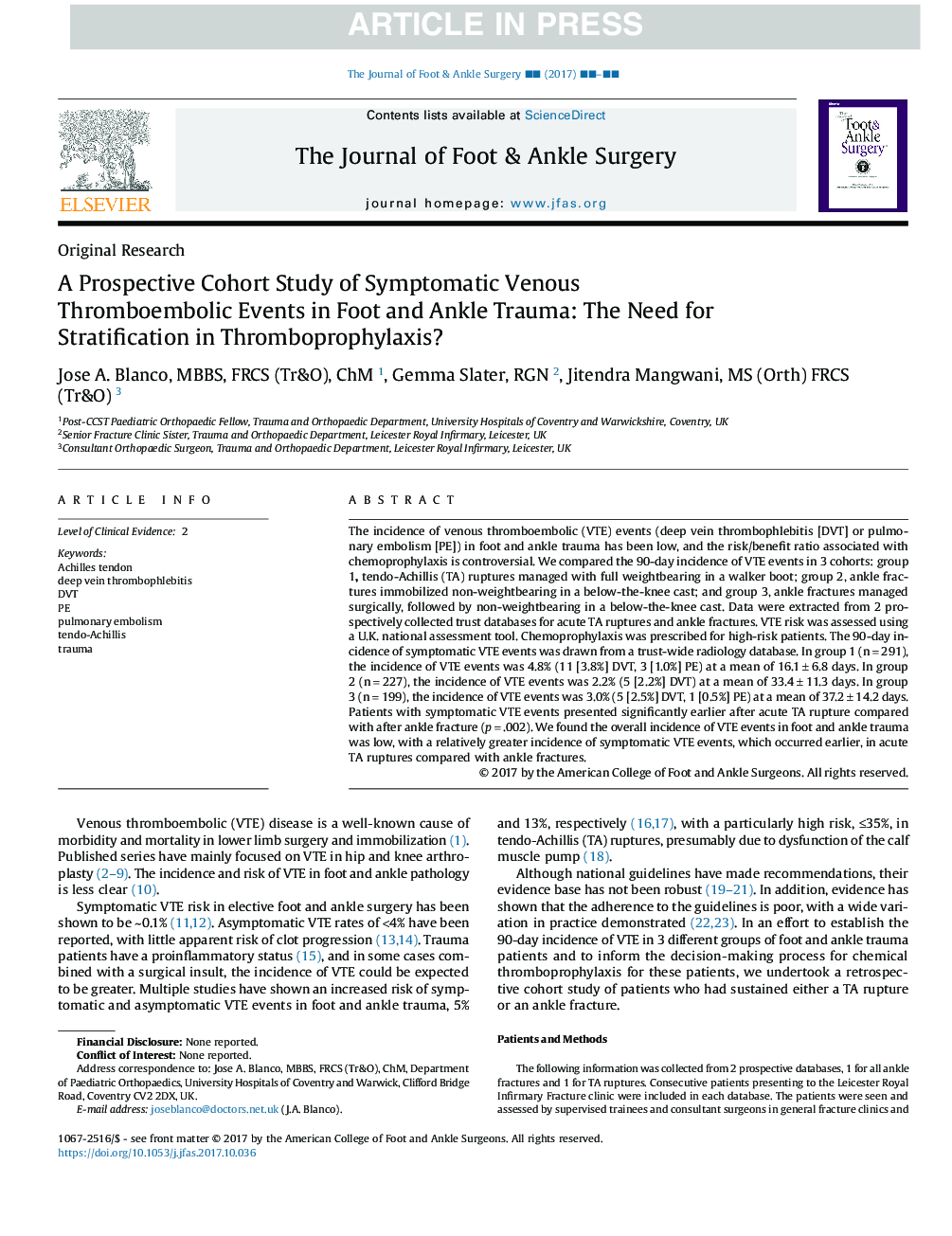| Article ID | Journal | Published Year | Pages | File Type |
|---|---|---|---|---|
| 8602998 | The Journal of Foot and Ankle Surgery | 2018 | 5 Pages |
Abstract
The incidence of venous thromboembolic (VTE) events (deep vein thrombophlebitis [DVT] or pulmonary embolism [PE]) in foot and ankle trauma has been low, and the risk/benefit ratio associated with chemoprophylaxis is controversial. We compared the 90-day incidence of VTE events in 3 cohorts: group 1, tendo-Achillis (TA) ruptures managed with full weightbearing in a walker boot; group 2, ankle fractures immobilized non-weightbearing in a below-the-knee cast; and group 3, ankle fractures managed surgically, followed by non-weightbearing in a below-the-knee cast. Data were extracted from 2 prospectively collected trust databases for acute TA ruptures and ankle fractures. VTE risk was assessed using a U.K. national assessment tool. Chemoprophylaxis was prescribed for high-risk patients. The 90-day incidence of symptomatic VTE events was drawn from a trust-wide radiology database. In group 1 (nâ=â291), the incidence of VTE events was 4.8% (11 [3.8%] DVT, 3 [1.0%] PE) at a mean of 16.1â±â6.8 days. In group 2 (nâ=â227), the incidence of VTE events was 2.2% (5 [2.2%] DVT) at a mean of 33.4â±â11.3 days. In group 3 (nâ=â199), the incidence of VTE events was 3.0% (5 [2.5%] DVT, 1 [0.5%] PE) at a mean of 37.2â±â14.2 days. Patients with symptomatic VTE events presented significantly earlier after acute TA rupture compared with after ankle fracture (pâ=â.002). We found the overall incidence of VTE events in foot and ankle trauma was low, with a relatively greater incidence of symptomatic VTE events, which occurred earlier, in acute TA ruptures compared with ankle fractures.
Related Topics
Health Sciences
Medicine and Dentistry
Orthopedics, Sports Medicine and Rehabilitation
Authors
Jose A. MBBS, FRCS (Tr&O), ChM, Gemma RGN, Jitendra MS (Orth) FRCS (Tr&O),
